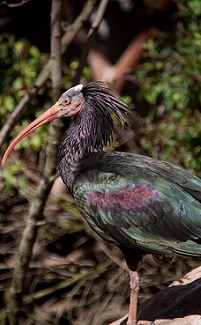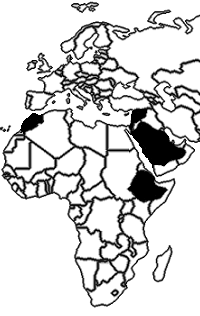Waldrapp Ibis
Geronticus eremita
- Habitat: open dry areas, coastlines, cliff ledges
- Range: Southern Morocco, Syria, North Africa
- Natural Diet: Insects, small reptiles, worms
- Status In The Wild: THREATENED
Fun Facts
-
The waldrapp or northern bald ibis is considered sacred in Egypt. Their image appears in ancient Egyptian hieroglyphics and tomb art.
-
The long, thin beak is used to probe mud for small prey and depends on its sense of touch
-
They are communal nesters. Being highly social, they are known to live in large flocks.
-
They practice biparental care with both parents participating in brooding eggs and rearing young
-
Their wild populations are declining at a rapid rate due to loss of habitat, illegal hunting, posioning due to pesticide use, and climate change.
Conservation Threats
Threats are having an effect on different
populations:
1.Morocco: Urbanization and farming
2.Syria: Hunting, overgrazing, collection of firewood
3.Turkey: Poisoning and pesticide utilization


